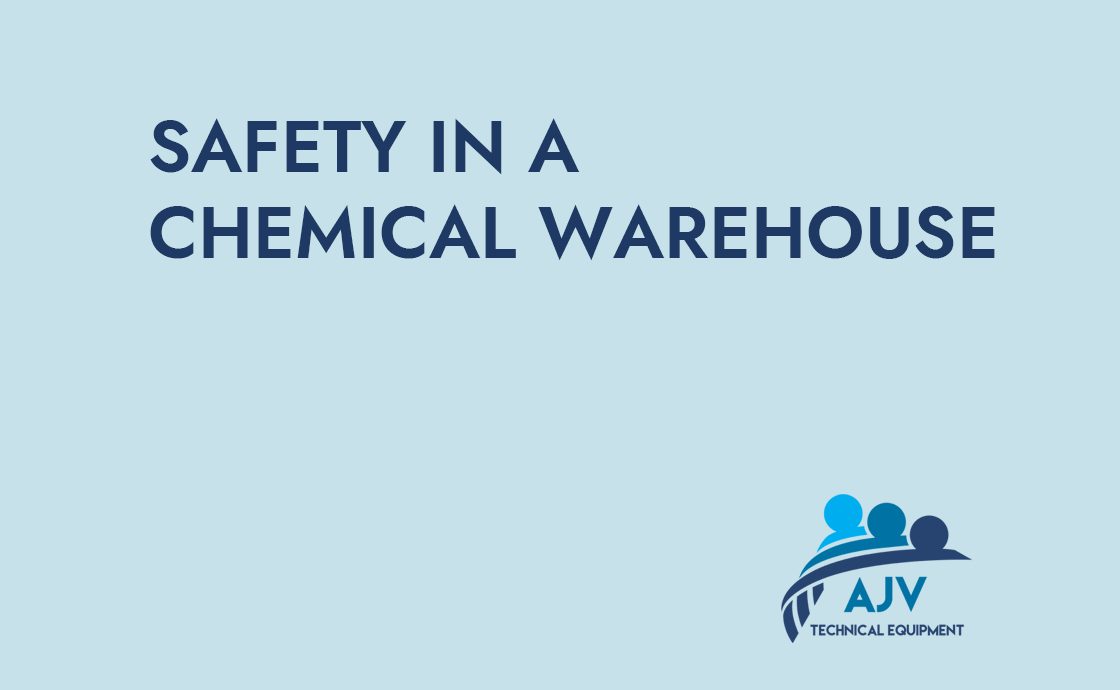A chemical warehouse is a building that stores flammable, combustible gases and vapours. These hazardous chemicals pose a potential risk of leakage and explosion if proper safety measures are not imposed. There are established industry standards and codes by regulatory bodies such as the National Fire Protection Association (NFPA), European Agency for Safety and Health at Work (EU-OSHA) etc. that focus on safe practices in chemical warehouses. Some of these codes and regulations are related to:
- Proper storage and handling of chemicals
- Updated fire safety measures
- Industry-standard electrical wiring and plugs in the warehouse
- Specialized light fixtures to be used in the hazardous environment
- Use of Hazmat suits and safety gear for the workers
- The Importance of safety in a chemical warehouse
Importance of safety in a chemical warehouse
The world has witnessed catastrophic disasters related to chemical leaks and explosions that have killed and injured thousands of people and have had both short-term and long-term effects. These incidents have time again proved that when it comes to safety in a chemical warehouse, there is no room for error. One such incident was so severe that it gave birth to the Seveso directive, later amended to Seveso ll and Seveso III directive by the EU, so that such fatal accidents can be prevented in future.
Safety Measures
Safety precautions need to be carried out in several aspects of a chemical warehouse:
Handling and storage of chemicals
Chemicals can be divided into different categories and each of these categories requires specialized storage and handling.
Flammable chemicals: Flammable chemicals need to be stored in a separate room and away from anything that can ignite them. Regular and careful maintenance of the storage facility is also essential.
Explosives: Some chemicals are prone to explosions and should be stored in ‘no spark’ rooms. If they come in contact with anything that ignites a spark, the chemicals can explode and result in a fatal accident. Explosion proof LED lights should be used in such hazardous environments. These specialized lights are designed to withstand extreme temperatures and are resistant to moisture or dust. If you want to read more on explosion-proof LED lights you can read our following articles:
Gases: Compressed gases must be handled carefully because if the cylinder is knocked or dropped it can shoot off like a rocket due to the rapid release of energy. The electrical equipment used in these storage facilities including the light fixtures should also meet industry standards.
The International Electrotechnical Commission has laid down specific rules namely EN 70069-0 and EN 60079-1 which stipulate and mark electrical equipment fit that can be used in a hazardous environment.
EN 70069-0 divides electrical equipment into three distinct categories:
Group I – Electric equipment that is used in mines with the presence of firedamp gases.
Group II – Equipment fit that is used in an explosive atmosphere where surface gases are present.
Group III – Electric equipment that can be used in explosive atmospheres where dust is present.
Group II is further divided into three subcategories based on the presence of specific gases in the environment:
IIA – A typical gas in this group is Propane.
IIB – A typical gas in this group is Ethylene.
IIC – A typical gas in this group would be Hydrogen and Acetylene.
The use of electrical equipment should depend on its suitability to a particular gas group. The lighting materials in a hazardous environment such as the chemical warehouse too should be used based on this equipment marking.
Some of the other chemical categories are poison, corrosives, oxidizers etc. Each of these chemical categories has its own set of safety protocols that need to be adhered to. What’s crucial is to label and classify the chemicals and make sure that the different chemical classes do not come in contact with each other.
Fire protection Measures
Since chemical warehouses store flammable, combustible chemicals and gases, fire safety protocols need to be in place at all times.
Inventory and documentation
Chemical warehouses should have an accurate record of the inventory that needs to be updated regularly. There should be a list of all the chemicals stored in the warehouse so that they can be labelled correctly.
Trained workers
A chemical warehouse needs to have trained workers who know how to handle the chemicals including transportation within and outside the facility. Workers should also be provided with hazmat suits, gloves and other safety gear, depending on the level of hazardous chemicals they need to handle.
Safety in a chemical warehouse is critical in order to thwart disasters resulting in death and destruction. Following industry codes on storage and handling of chemicals, worker training, regular maintenance of the facility and use of specialized electrical equipment such as explosion proof LED lights, are some of the ways to prevent leakages, explosions, or fires at the storage facility.

